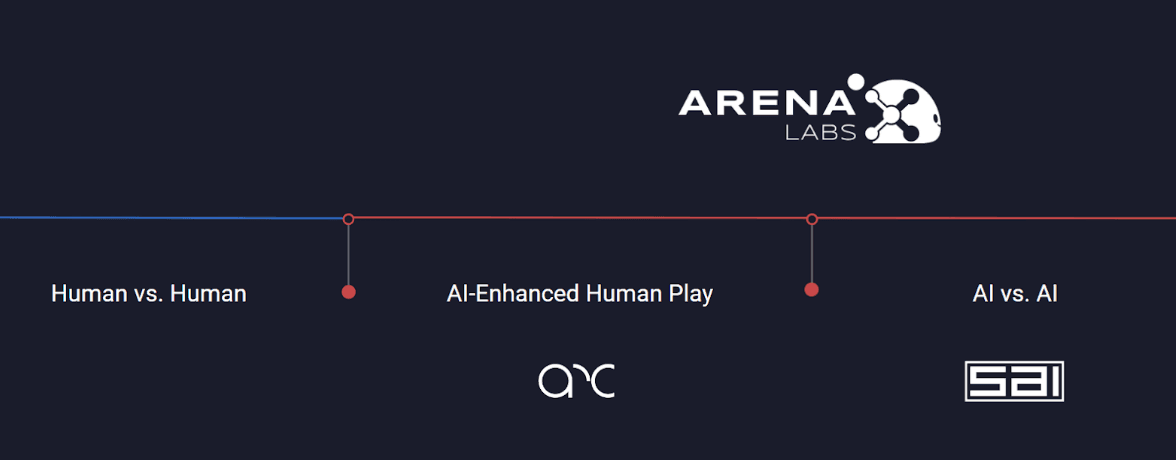
Why Most Web3 Games Fail: Understanding Your Audience
Discover why most web3 games fail to thrive. Learn the challenges of targeting crypto natives, traditional gamers, and hybrid audiences, and why clear audience focus is key.
The web3 gaming industry faces a critical challenge: identifying and catering to its target audience. Gwei (Wei Xie), the founder of AI Arena (ArenaX Labs), recently shared insights into this issue on X (formerly Twitter), highlighting why most web3 games struggle to achieve long-term success. The core problem lies in understanding the distinct motivations of three primary groups in this space: crypto natives, traditional gamers, and "web3 gamers."

Gwei (Wei Xie) Founder of AI Arena (ArenaX Labs)
First, Who are ArenaX Labs?
ArenaX Labs is the innovative studio responsible for AI Arena - a PvP platform fighter that combines gaming, AI education, and NFTs. The team recently secured $6 million in its latest funding round. Framework Ventures led the latest round, with participation from SevenX Ventures, FunPlus, and Moore Strategic Ventures.
ArenaX Labs' mission is rooted in educating people about artificial intelligence (AI) and inspiring them to become AI developers. Founded in 2018 by Brandon Da Silva, Dylan Pereira, and Wei Xie, the company initially focused on indie games. However, the discovery of NFTs in 2020 led to a realization that AI could be wrapped in NFTs, leading to the inception of AI Arena.

ArenaX Labs
General Web3 Audience: Financial Returns First
Crypto natives, representing the general web3 audience, prioritize financial returns over gameplay. For this group, games are viewed as "money games," where playing often feels like an opportunity cost unless it yields tangible monetary benefits. Their focus is less on fun and more on the potential for profit, especially during bullish market periods.
Traditional Gamers: Quality and Immersion
Traditional gamers, by contrast, are driven by gameplay quality, immersion, and fun. This group has a plethora of options across various platforms and genres and often views crypto-related initiatives with skepticism. Many of them are reluctant to embrace web3 games, associating them with financial speculation rather than entertainment.
Web3 Gamers: A Small and Transitional Pool
The third group, web3 gamers, straddles the line between gaming and financial interests. While they enjoy gaming, they also value financial returns. Over time, however, many in this group migrate to the general web3 audience due to the compelling opportunity cost dynamics. As a result, the pool of dedicated web3 gamers remains relatively small.
The Challenges of Audience Targeting
Web3 game developers face a paradox when determining their target audience:
- Targeting Web3 Gamers (Group C): This audience is too small to sustain scalability. The number of games launching far outweighs the demand from this group.
- Targeting Traditional Gamers (Group B): While this group offers a larger audience, their expectations for high-quality gameplay and their aversion to crypto mechanics present significant challenges. Additionally, catering to traditional gamers can alienate crypto natives (Group A) who prioritize financial mechanics over polished gameplay.
- Targeting Crypto Natives (Group A): This requires building games focused on financial returns rather than immersive or entertaining experiences.
Developers often attempt to appeal to all three groups, but this approach is rarely sustainable. Balancing the conflicting priorities of these audiences is extremely difficult, leading to diluted products that fail to satisfy any group effectively.

Why Most Web3 Games Fail: Understanding Your Audience
Clear Strategy and Honest Targeting
To succeed in the competitive web3 gaming space, developers must be honest about their target audience. Gwei’s analysis emphasizes the importance of aligning the game’s design, mechanics, and marketing with the needs of a specific group:
- If targeting crypto natives (Group A): Embrace the financial-first approach and build games that cater to their priorities.
- If targeting traditional gamers (Group B): Focus on creating a high-quality gaming experience and delay introducing crypto mechanics until the audience is more receptive.
- If targeting Web3 gamers (Group C): Acknowledge the limited size of this pool and ensure the game can scale within these constraints.
A Competitive Landscape
Blockchain gaming is a challenging sector. Developers must contend with intense competition, limited audience pools, and the high stakes of balancing financial mechanics with engaging gameplay. While exceptions exist, and some projects will achieve success, Gwei warns that these cases will remain rare without a clear and honest understanding of the target audience.
About the author
Eliza Crichton-Stuart
Head of Operations
Updated:
January 10th 2025
Posted:
January 10th 2025



